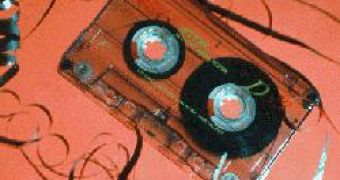Magnetic audio and video tapes and their use as evidence in court have been highly contested because field specialists could tamper with the original to include or exclude critical information that could decide the outcome of the trial.
A new technology developed by the National Institute of Standards and Technology (NIST) is able to actually see if and at what point this kind of evidence has been tampered with, with greatly enhanced accuracy.
The new device can convert magnetic evidence of tampering on these tapes into images with four times the resolution previously available. This means that it can detect all kinds of interference, from erasing to overdubbing and frame insertion, much faster that commonly used manual analysis.
It also offers a greatly reduced risk of contaminating the tapes with magnetic powder. The first law enforcement agency that showed great interest in this technique is the FBI, who wants to use it for validation as a forensic tool.
Using four times the number of magnetic sensors, compared to earlier applications, precisely 256 of them, embedded on a NIST-made silicon chip that serves as a read head in a modified cassette tape deck, the new device is capable of operating parallel with a standard read head, enabling investigators to listen to a tape while simultaneously viewing the magnetic patterns on a computer monitor.
Thus, the final images have an image resolution of 1600 dpi and can be fully controlled by a computer to digitize the audio directly from the acquired image. Various features can be analyzed, from background noise to gunshots, which can then be identified as belonging to the original tape or as later additions.
According to the NIST, "the system is designed to analyze analog tapes but could be converted to work with digital tapes," as project leader David Pappas explained.

 14 DAY TRIAL //
14 DAY TRIAL //